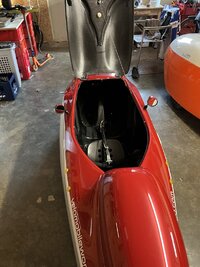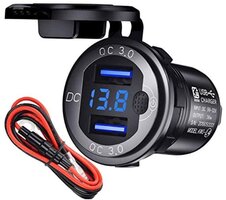Wrong.
100 % from those
who had Lupine and this DC/DC converter, because it was not up to the load.
And some more just because some contacts were not crimped on properly.
It's not the light. The light is perfect. It's the funny wiring.
OK - I guess you never had this "lights out" situation. I had it - once. But it was my fault. The battery just died because I did not pay attention on a long distance ride and at some point it just was dead. In the middle of the night. At some speed.
Try this (even without a hill, but not on a wide, perfectly straight road - just a normal bike path or smaller road with some bends):
Ride at night - no moon, no cars, no street lamps. Try 30 km/h at first. Then switch out your light. And see how you feel.
Then imagine you are not at idle speed, but at 40 / 50 km/h, you do not know the street, it's not straight and probably with a slight slope.
It's not funny!
And that's the reason I even have two batteries and a switch to change from A to B with a flick of my wrist.
And I have used it twice this year already.




